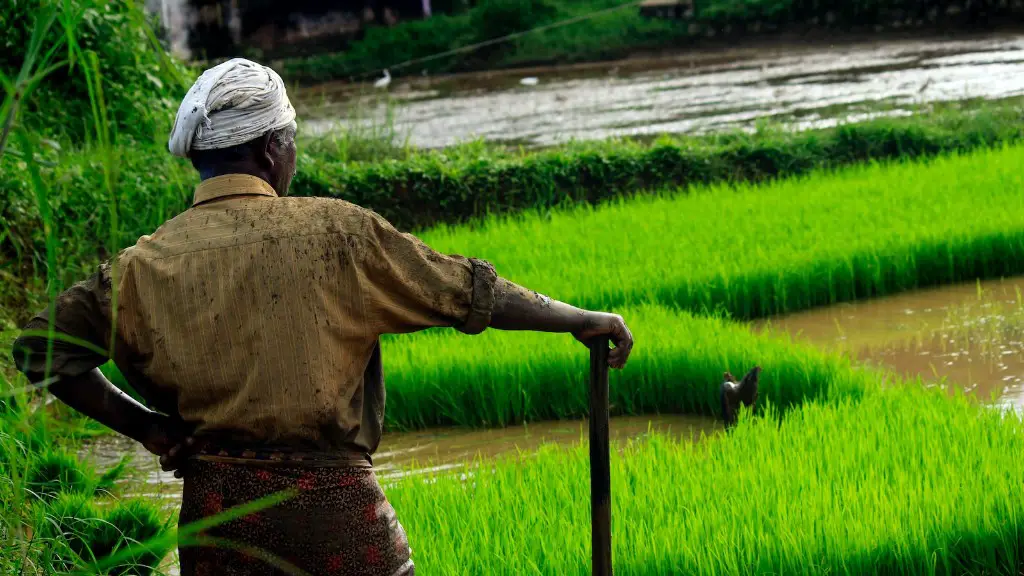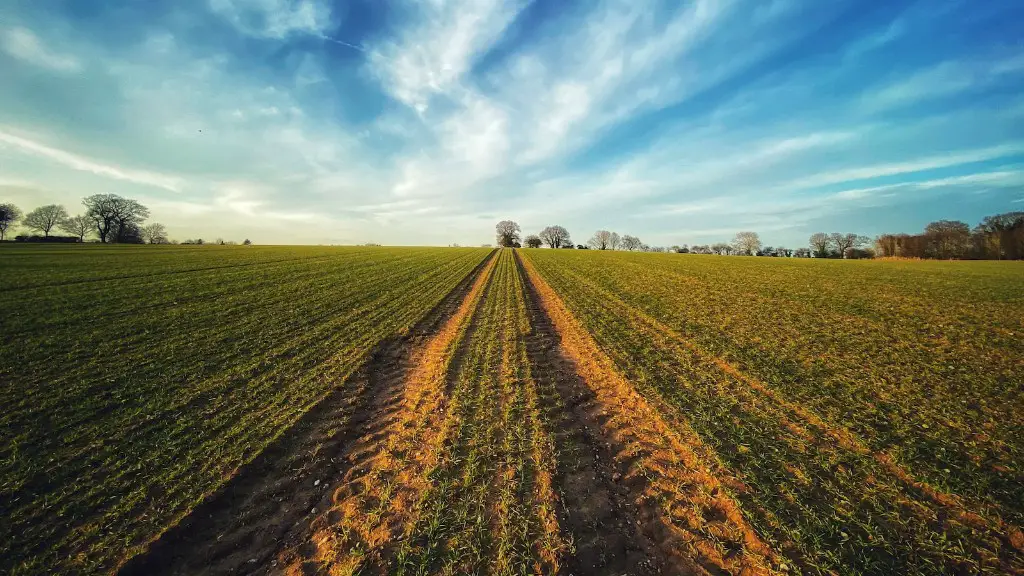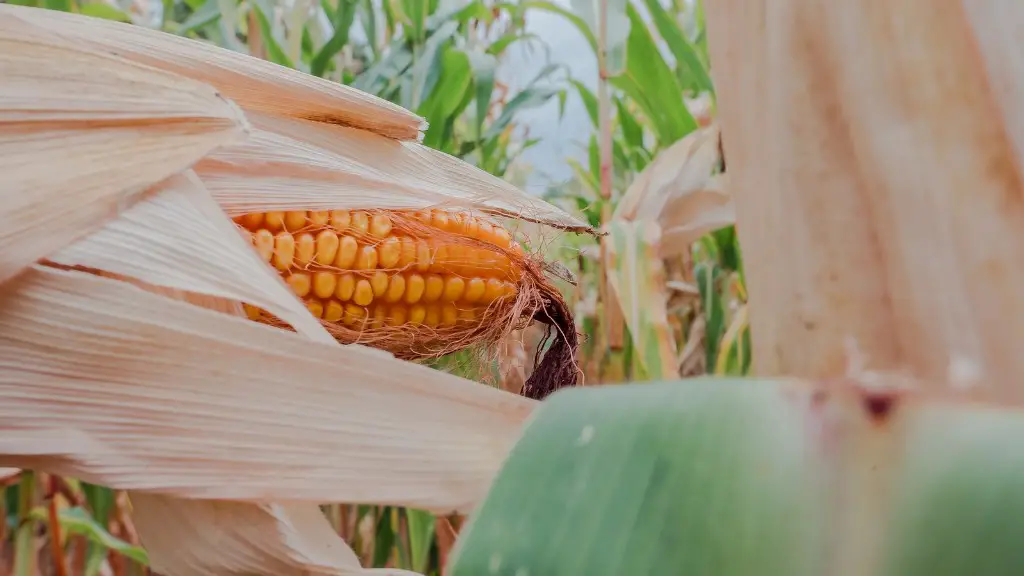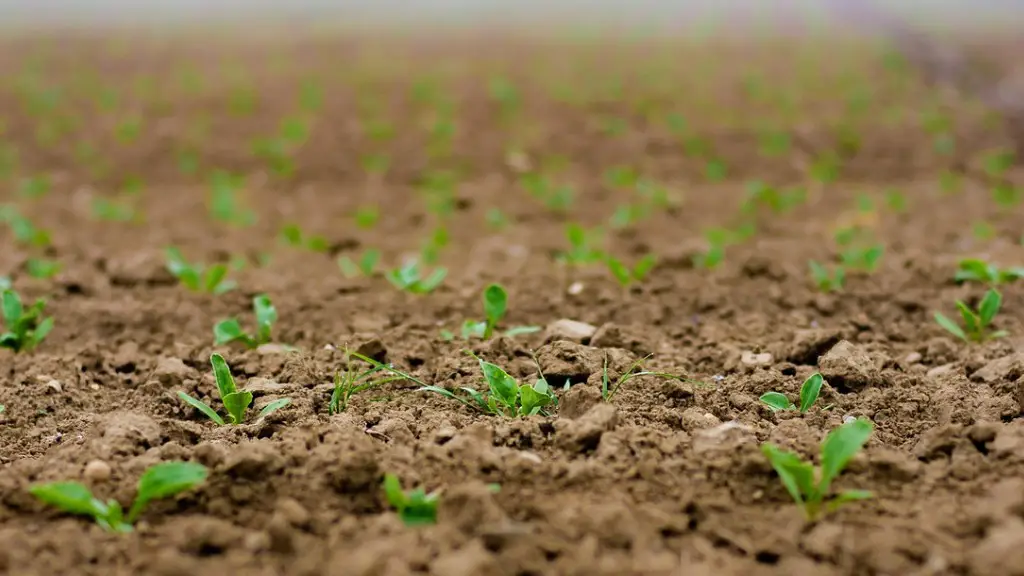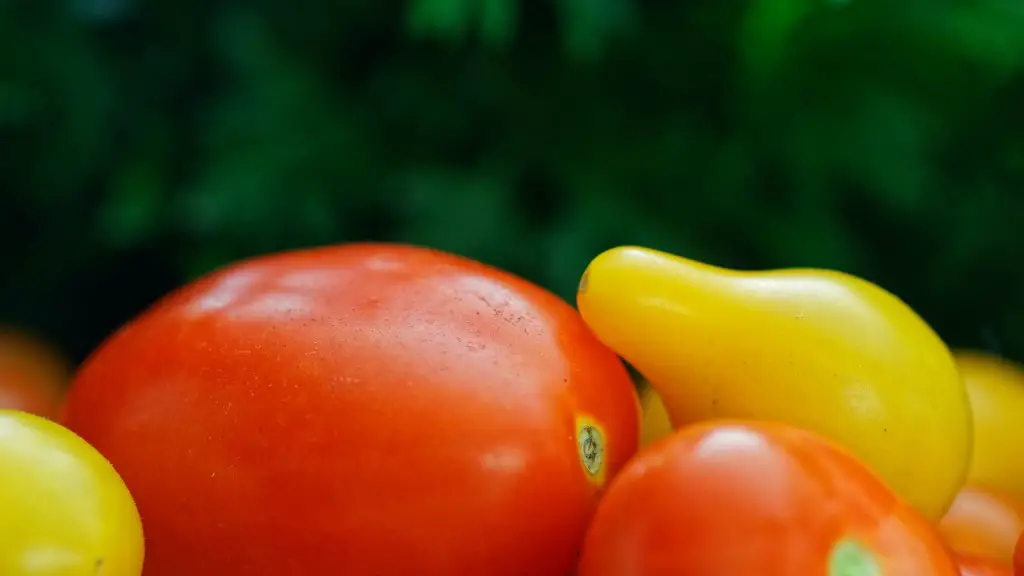Arable farming is a form of agriculture that focuses on the cultivation of seasonal grain crops, such as wheat and oats, and other plants grown for harvest and sale. Arable farming typically involves a rotation system where the land is used to grow a different crop in each season, providing a wide range of nutrients for the soil and different uses for the land. The main aim of arable farming is to increase crop yields, as well as encouraging ecological diversity through crop diversity.
Arable farming is largely dependent on the application of modern technology for planting, harvesting, and storing crops. Farmers use a combination of machines and manual labour to ensure that each crop is planted, cared for, and harvested when it is at its optimum ripeness. Specialised harvesting equipment, such as combine harvesters and threshing machines, help to automate the harvesting process, while grain silos and coolers help to protect and store harvested crops.
Fertilisers, herbicides, and other chemical treatments are often used to help increase crop growth and yields. These must be applied with care, as excessive use of chemical treatments can damage the environment and degrade the quality of the soil. In many cases, organic farmers rely on crop rotation and fertilising with animal dung and other organic materials to nourish their crops.
Modern arable farmers are also taking advantage of the advances in GPS and remote sensing technology to help improve crop yields and reduce water and energy use. Satellite-derived data can provide farmers with detailed information on soil moisture and nutrient levels in their fields, which can be used to optimise crop rotation patterns and ensure the accurate and efficient application of fertilisers and other chemicals.
Arable farmers often use a wide range of technologies and techniques to ensure their crops are healthy and stay in a prime condition for market. Irrigation systems are commonly used to ensure a consistent water supply for crops, while biocontrol methods are employed to keep pests away from sensitive crops. Harvesting and storage methods must be carefully planned to ensure efficiency and maximum yield, while post-harvest treatments, such as drying and packaging, are essential for ensuring superior products are delivered to market.
Crop Rotation In Arable Farming
Crop rotation is an essential part of arable farming, as it ensures that the soil nutrients and soil structure remain in balance with the varying needs of the different crop types, while also increasing the amount of carbon that can be stored in the soil. This is important both for the carbon cycle and the productivity of the land. Crop rotation also helps to reduce pest damage, as diseases and infestations are decreased when the same crop is not grown continuously in the same area.
Crop rotation can be complex and is highly dependent on the environment, soil quality, and the types of crop that are being grown. There are a variety of options, including annual, biennial, and perennial rotation, as well as crop combination and relay cropping.
To optimise the benefits of rotation, arable farmers must carefully select which crops fit best in each rotation system. They must also manage the land efficiently to make sure that no squares of land are left unused for too long, as this can lead to a decrease in yields over time.
Minimizing Water Usage
Minimising water usage is an important objective for all arable farmers. Irrigation can be an effective tool for ensuring consistently high yields, but farmers must use this resource responsibly, as irrigation has a significant environmental impact if not managed correctly. Utilizing modern technologies, such as remote sensing, can help farmers to plan and execute precise irrigation methods that minimise water requirements and maximise yields.
Arable farmers can also use a variety of smart irrigation systems and tools, such as soil moisture sensors, weather stations, and crop-specific irrigation controls, to create the most efficient and sustainable water usage. By monitoring and tracking water usage, farmers can optimise their irrigation plans and reduce their water usage while still achieving good crop yields.
Integrated Pest Management In Arable Farming
Integrated Pest Management (IPM) is a critical factor in arable farming, as it helps to keep pest populations under control while reducing the impact of chemical treatments on the environment. IPM combines a variety of pest control methods, from cultural practices, such as crop rotation, to mechanical and biological controls, such as traps, bird houses, and predator insects.
IPM can also be used to minimize the need for chemical treatments. Non-chemical methods can often be used to reduce the number of pests in a given area, as well as providing an alternative to chemical treatments for more resistant pests. Planting crops in rotation cycles, selecting cultivars that are more resistant to pests, and encouraging natural predators can all help to reduce the need for agricultural chemicals.
Soil Maintenance
The health of the soil is essential for arable farming and it is important that arable farmers take steps to maintain the quality and fertility of their soil. Soil degradation is a common problem in arable farming, as poor soil health can lead to decreased crop yields and losses due to pest damage. By practising traditional crop rotation and soil conservation methods, as well as taking advantage of modern technologies, such as GPS and remote sensing, farmers can greatly improve the condition of their soil.
Organic fertilizer, mulching, and crop rotation are all effective ways of improving soil fertility and promoting the growth of beneficial microbes. These methods can also help to reduce the need for chemical fertilisers, as well as increasing water efficiency, as the soil will better retain moisture.
Agricultural machinery
Agricultural machinery is an essential part of modern arable farming, as it helps to reduce manual labour requirements, increase yield and efficiency, and reduce costs. However, the use of agricultural machinery also brings a number of risks, as even mild mechanical problems can result in significant damage to crops and soil. To reduce the risks associated with agricultural machinery, arable farmers must adhere to strict safety protocols, as well as using well-maintained, up-to-date equipment.
Wheeled agricultural machines such as tractors, combines, and balers have revolutionised arable farming, with advances in GPS, remote sensing, and automation providing farmers with an unprecedented level of accuracy and efficiency. Increasingly, farmers are using technology to automate the planting and harvesting processes, while specialised Plant Management Systems (PMS) help to manage inputs and improve yields.
Storage & Logistics
Many arable farmers are now taking advantage of advances in transport and logistics technology to improve their storage and logistics operations. Automated warehouses and transport systems, combined with sophisticated tracking software, can help to streamline the storage and transit of their crops, ensuring fast and reliable delivery to market.
Modern storage methods, such as grain silos and coolers, are designed for keeping crops in optimal condition, while also reducing energy costs. Smart inventory management systems help farmers to keep track of their stocks, ensuring that they always have the necessary supplies to meet customer demand. In addition, GPS tracking and GPS-enabled devices can be used to monitor the location and status of each shipment, allowing farmers to better manage their delivery schedules.
Risk & Insurance
Risks, such as poor weather and pests, are an ever-present factor in arable farming, and it is important for farmers to be prepared for the worst. Arable farmers must make sure that their agricultural insurance cover will adequately cover crop losses and other risks. Comprehensive insurance policies should cover physical losses from natural disasters, as well as restrictions on production caused by diseases, pests, and weed infestation.
Advances in weather forecasting have also allowed arable farmers to plan ahead, helping them to mitigate losses and minimise disruption. GPS tracking can also be used to monitor crop conditions, allowing potential risks to be identified and quickly addressed before they become costly problems.
